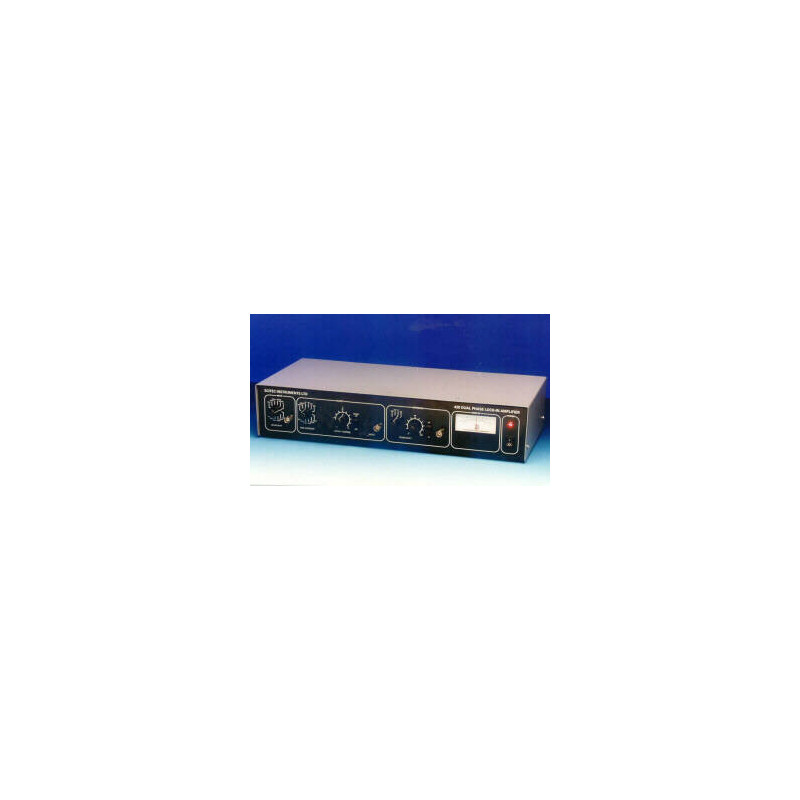SCT-410 Lock-In Amplifier

Reference number: SCT-410
SCT-410 is a single phase analogue lock-in amplifier. It is suitable for making amplitude and phase measurements.


Reference number: SCT-410
SCT-410 is a single phase analogue lock-in amplifier. It is suitable for making amplitude and phase measurements.

Need more info?
Contact our expert.
Optics & Optomechanics Team
Phone: +49 8153 405-11
Description
Lock-In amplifiers are used to measure the amplitude and phase of small AC signals in the presence of much larger noise levels. They are widely used to recover small optical signals such as those encountered in spectroscopy and studies of fluorescence and luminescence. However, they also have applications in many other fields including electronics and cryogenics where they can be used in component characterisation, bridge networks and to measure the resistance of superconductors.
The output from a l lock-in amplifier is a DC voltage proportional to the aplitude of the input signal but with the noise removed. It is also a function oft he relative phase difference between the input signal and the associated reference signal. This property allows lock-in amplifiers to be used for measuring the phase properties of the input signal as well.
The input signal channel amplifies the input signal to a level suitable fort he demodulator. High performance, low-noise, broad-band amplifiers are used throughout. The input circuitry can accept a differential or sigle-ended input via the front panel signal input BNC.
The output of the signal input stage is processed using a very high bandwidth demodulator to recover the input signal.
The output from the demodulator is passed through a first order low pass filter and then amplified before output via a front panel BNC.